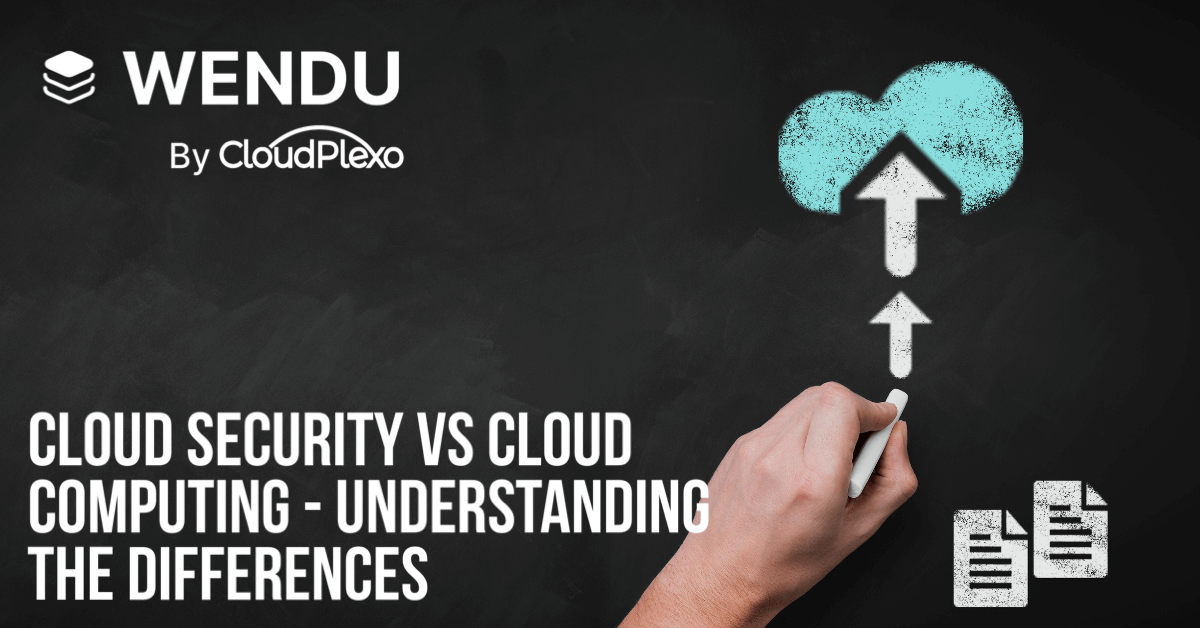
Cloud Security vs Cloud Computing - Understanding the Differences
The realm of cloud technology encompasses two essential pillars: cloud security and cloud computing. While they share a common foundation, they serve distinct purposes that contribute to the overall success of businesses operating in the cloud. In this blog post, we'll delve into the differences between cloud security and cloud computing models, explore the delicate balance between security and flexibility, and discover how to seamlessly integrate security measures into cloud computing workflows.
Comparing Cloud Security and Cloud Computing Models
- Cloud Security: Cloud security revolves around protecting data, applications, and infrastructure hosted in the cloud from cyber threats. It encompasses a range of practices, protocols, and technologies to safeguard sensitive information and maintain the integrity of cloud environments.
- Cloud Computing: Cloud computing, on the other hand, involves the delivery of various computing services over the internet. These services can include storage, processing power, databases, networking, and more. Cloud computing empowers businesses to access and utilize these resources on a pay-as-you-go basis, enabling scalability and cost efficiency.
Balancing Security and Flexibility in the Cloud
- Security Concerns: Security is paramount in the cloud, given the shared nature of resources. Organizations must address concerns such as data breaches, unauthorized access, and compliance. Robust security measures, encryption, and access controls are crucial to mitigating these risks.
- Flexibility and Innovation: Cloud computing offers unparalleled flexibility, allowing businesses to scale resources up or down based on demand. However, stringent security measures can sometimes hinder rapid innovation. Balancing security and flexibility is a delicate task that requires strategic planning.
Integrating Security Measures into Cloud Computing Workflows
- Identity and Access Management (IAM): Implement strong IAM practices to ensure that only authorized users can access sensitive resources. Multi-factor authentication and role-based access controls enhance security without sacrificing usability.
- Encryption: Utilize encryption for data at rest and in transit. This adds an additional layer of protection to sensitive information, making it unreadable to unauthorized individuals.
- Regular Audits and Monitoring: Employ continuous monitoring and regular audits to identify and address potential security gaps. Automated security tools can provide real-time insights into the health of your cloud environment.
Wendu: Bridging Cloud Security and Cloud ComputingAt Wendu, we recognize the symbiotic relationship between cloud security and cloud computing. Our comprehensive solutions cater to both aspects, ensuring that businesses can harness the benefits of cloud computing without compromising on security. From advanced encryption to real-time monitoring, Wendu bridges the gap between innovation and protection.
Understanding the nuances between cloud security and cloud computing is pivotal for thriving in the digital age. While cloud computing propels businesses forward, cloud security safeguards their journey. Embrace the synergy between these two domains to unlock the true potential of cloud technology. Wendu stands as your steadfast partner, ready to guide you through the intricacies of cloud security and computing. Contact us today to fortify your cloud endeavors.